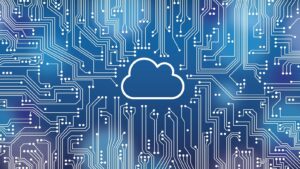Dramatic leaps in computing power have moved artificial intelligence (AI) from the realm of science fiction screenplays to everyday reality. Serious discussions of AI typically focus on uses such as self-driving cars, trading stocks, diagnosing illness or playing chess. Agricultural applications are usually nowhere to be found in popular discussions of the subject, even though AI is potentially a far more important use of this technological breakthrough. In fact, AI may very well save our industry.
Consider what agriculture might look like in a future where advanced AI systems are fully developed and deployed across the food-growing value chain. Hollywood has conditioned us to expect the worst. It’s not hard to imagine the silver screen’s alternative vision of agricultural AI, with self-aware combines and tractors going on a rampage, wiping out farms in their path.
While fiendish robots sell movie tickets, this is not a realistic vision of the future. Even so, benign AI systems raise their own disturbing questions by moving in on the one area in which humans have always enjoyed a monopoly — intelligence. If AI takes over in agriculture, what sort of job is left for the farmer?
To clarify the situation, it helps to define our terms.
AI is a form of machine learning that describes the ability of an algorithm to sense its environment, process the data and independently adapt to expected and unexpected scenarios. Rather than repeat a pre-programmed sequence of responses to situations, true AI systems absorb large amounts of data, discover the relevant patterns contained therein and come up with potential solutions. Through its raw computing power, such algorithms weigh the statistical likelihood of various outcomes from each potential solution so that the best option may be selected and acted upon.
The value of an AI’s choice depends on the quality of the data it receives. More data, particularly a greater amount of accurate data, enhance AI’s ability to correctly evaluate the range of possible outcomes. The most cutting-edge AI research focuses on mimicking the brain’s neural pathways in a way that augments, rather than replaces, human capabilities. The term AI is used when describing algorithms as “smart,” referring to the system’s adaptability. Instead of scripting an analysis, the AI is able to understand an unexpected situation in a more human way.
When an AI system comes up with a solution to a problem, it does so without emotion, without ego, without superstition and without any of the typical faults that impede human judgment.
At heart, the AI is a tool, and from its earliest days 10,000 years ago, agriculture has been at the forefront of adopting new tools. Sickles made of baked clay and primitive wooden ploughs made Neolithic harvests possible. In the course of thousands of years, these tools gave way to iron implements and sharp blades. Steam power replaced oxen and horse to be replaced later by gasoline and diesel engines. It’s only a matter of time before all-electric and hybrid motors supplant internal combustion on the farm.
Machines began replacing humans in agriculture quite some time ago. Self-driving combines and tractors are a reality, using GPS sensors to precisely do what were once back-breaking jobs. Nostalgia aside, few would seek to return to the old way.
Dispelling the Myths of Agricultural AI
To dispel the myths surrounding AI, it’s worth taking a deeper look at what AI can do. Far from being the precursor of humanity’s doom, AI may very well play a decisive role in solving one of the biggest challenges humanity faces: the global food security crisis.
An agricultural industry that incorporates advanced AI into all of its processes would deliver benefits on a global scale. It would mean better-informed decisions made more quickly and accurately despite rapid changes in the environment. It would mean more stable commodity markets as traders act on knowledge instead of speculation. It means a mitigation of the environmental impacts of farming as inputs are precisely delivered. Most importantly, it would mean driving the innovation that’s needed to deliver food on the scale needed to feed 9.8 billion by the year 2050.
Those are some impressive benefits, but to take advantage of them, our industry must think differently about the role of AI in the fields.












